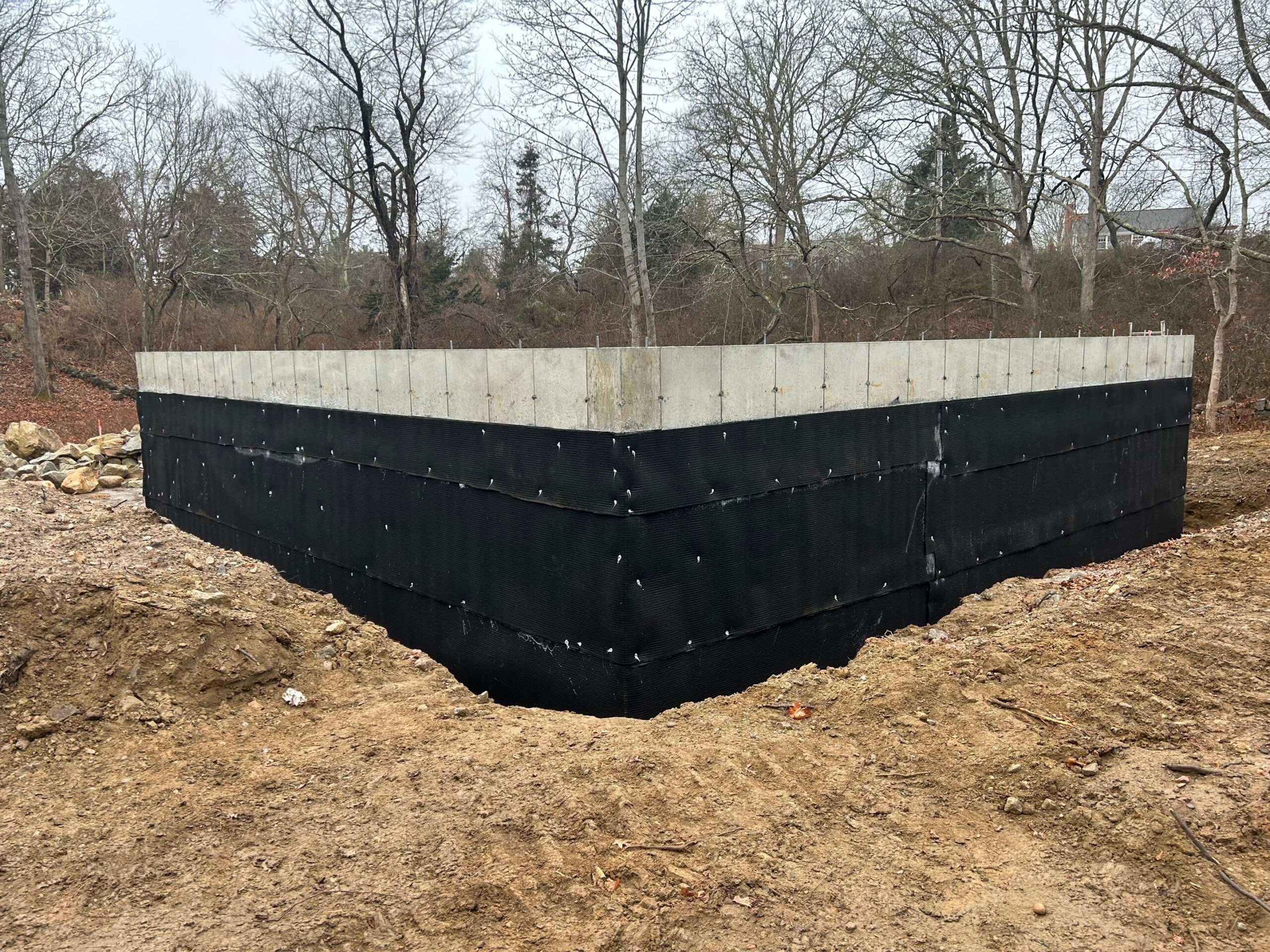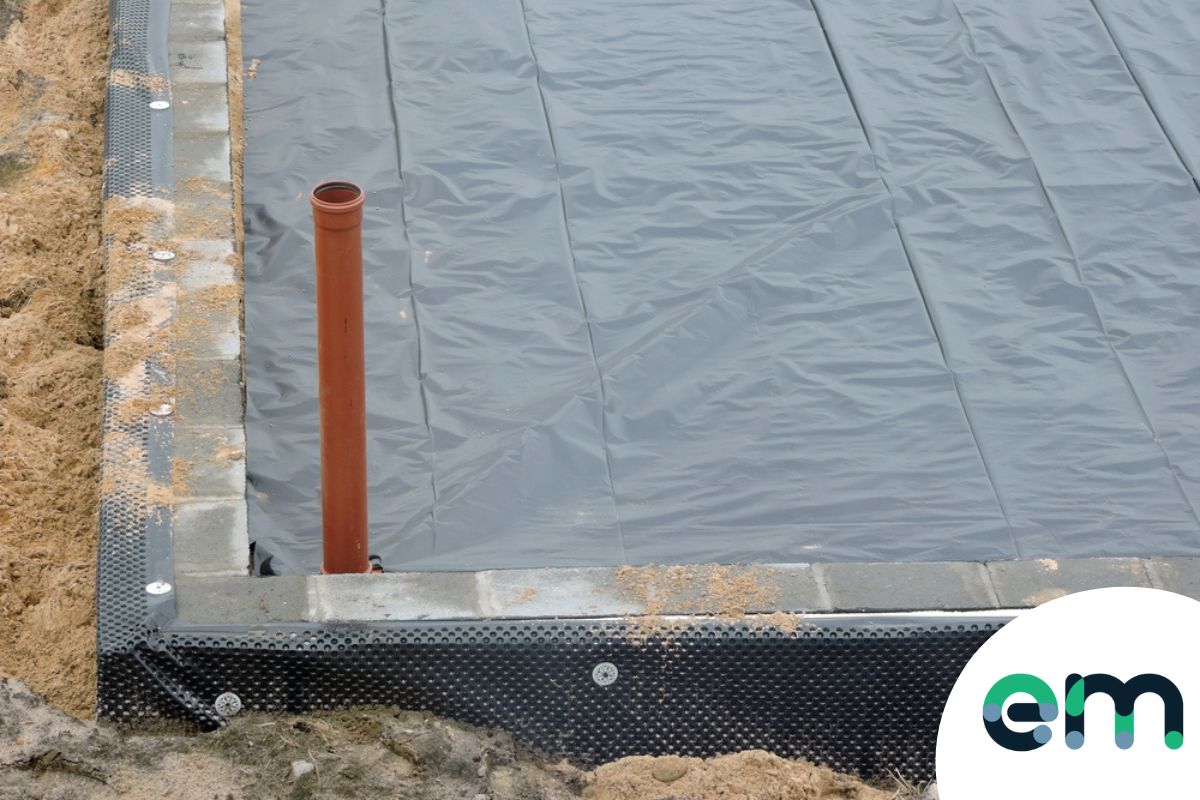Exploring the Numerous Methods and Solutions for Effective Damp Proofing
Moisture in buildings positions substantial obstacles to both structural honesty and indoor air high quality. Numerous methods and remedies have actually emerged to combat this prevalent concern. From standard damp-proof membrane layers to ingenious chemical treatments, each technique provides one-of-a-kind benefits. Understanding these alternatives is important for effective dampness control. Picking the ideal solution depends on specific building problems and needs, motivating more exploration right into the most reliable wet proofing strategies readily available.
Understanding the Reasons For Wetness
Although dampness can develop from various sources, comprehending these reasons is important for effective remediation. Commonly, dampness originates from 3 primary resources: increasing moist, permeating wet, and condensation. Rising wet takes place when groundwater travels up-wards with porous products, such as brick or rock, usually due to a lack of an efficient obstacle (mould removal newcastle). Permeating damp is commonly caused by outside aspects, including roof leakages, damaged seamless gutters, or harmed walls, enabling water to infiltrate a property. Condensation, on the other hand, arises from excess dampness airborne, typically exacerbated by bad ventilation and temperature differences, leading to water beads creating on surface areas. Recognizing these underlying concerns is vital, as each sort of wetness calls for a customized strategy for remediation. Appropriate evaluation aids in figuring out the most efficient remedies, ultimately protecting the architectural honesty of a structure and improving interior air quality
Traditional Damp-Proof Membranes

Chemical Damp-Proofing Solutions
Chemical damp-proofing services provide an innovative strategy to stop wetness invasion in structures. These techniques typically entail the application of liquid chemicals that permeate stonework and develop a barrier against rising wet. Generally used chemicals consist of silanes, siloxanes, and other water-repellent representatives that react with surface area materials to produce a hydrophobic layer.The application procedure generally calls for exploration openings right into the wall surfaces, injecting the chemical remedy, and enabling it to heal. This technique is particularly helpful for older frameworks where traditional damp-proof membranes may be unwise. Additionally, chemical damp-proofing can be less disruptive and a lot more cost-effective than substantial improvement projects.While efficient, these solutions rely on correct application and ecological conditions for peak efficiency. Routine maintenance and monitoring are important to assure the long life of the damp-proofing treatment. Overall, chemical damp-proofing represents a functional choice for guarding structures against moisture-related damages
Dental Caries Wall Building Methods
Dental caries wall construction techniques provide many advantages, particularly in dampness control and energy effectiveness. By integrating an air gap between 2 layers of masonry, these walls successfully reduce water access while improving insulation. This mix not just secures frameworks from wetness but also contributes to decreased power usage.
Benefits of Tooth Cavity Wall Surfaces
When taking into consideration efficient wet proofing approaches, the advantages of tooth cavity walls stand out prominently. Dental caries wall surfaces include 2 separate layers, producing an air void that successfully minimizes wetness penetration. This design decreases the risk of wetness, as the outer wall surface works as an obstacle against rainfall and water access. Additionally, tooth cavity walls boost thermal insulation, which adds to energy effectiveness by decreasing warm loss. They likewise supply sound insulation, assisting to develop a quieter interior setting. Additionally, the air space enables ventilation, which assists in wetness control and decreases the likelihood of mold growth. These benefits not just improve the total comfort of a building but additionally contribute to its long life and structural honesty.
Dampness Control Approaches
Reliable dampness control techniques are vital in tooth cavity wall building to ensure long-lasting defense versus moisture. One main approach involves the unification of weep openings, which help with water drainage from the tooth cavity, stopping accumulation. In addition, making use of breathable membrane layers can help take care of wetness degrees while enabling entraped vapor to get away. Proper placement of insulation is likewise critical, as it needs to not block drain paths. Furthermore, making certain that the external leaves of the dental caries wall surface are constructed with water-resistant products improves total resilience. Regular upkeep checks are necessary to identify any kind of obstructions or damage early, safeguarding the structure's integrity. Ultimately, a combination of these methods creates a durable protection versus wetness intrusion in cavity wall surfaces.
Insulation and Power Efficiency
Insulation plays a vital function in enhancing power efficiency within cavity wall surface building and construction. By including shielding products, these wall surfaces create a thermal barrier that reduces warm loss and decreases power intake. Effective insulation not just assists keep a secure indoor temperature level yet likewise mitigates the risk of wetness, as it avoids condensation within the wall surface cavity. Different methods, such as making use of stiff foam boards or mineral woollen, can be utilized to accomplish optimal insulation performance. Additionally, proper setup is vital to assure that spaces and spaces are lessened, which can or else compromise energy efficiency. Eventually, a well-insulated cavity wall adds considerably to general sustainability and decreases heating & cooling expenses for property owners.
External Damp Proofing Approaches
Exterior damp proofing approaches are essential for securing structures from wetness seepage. 2 efficient methods consist of the application of water resistant membranes and the installation of French drains. These options help reduce water buildup and preserve the integrity of buildings.
Waterproof Membrane Layer Application
While numerous methods exist for avoiding wetness ingress, the application of waterproof membrane layers continues to be an extremely effective exterior damp proofing technique. These membranes are commonly made from materials such as polyethylene, rubber, or modified asphalt, providing a durable barrier against water infiltration. The setup procedure involves using the membrane layer to the external surface areas of structures or wall surfaces, guaranteeing full protection to stop leakages. Appropriate attachment and sealing at joints are crucial to making best use of performance. Water resistant membranes can be applied in more info various forms, consisting of fluid coatings and sheet membrane layers, enabling flexibility based on the particular demands of the structure. This approach not only shields structures from dampness yet also boosts their longevity and structural stability.
French Drainpipe Setup
One efficient technique for managing groundwater and stopping wetness buildup around a structure's foundation is the installment of a French drainpipe. This drainage system includes a trench full of crushed rock and a perforated pipeline that redirects surface water far from the foundation. Appropriate setup calls for mindful preparation, ensuring that the drain slopes away from the framework to facilitate optimal water flow. Furthermore, the location of the drainpipe is essential; it should be placed in areas prone to merging or excess dampness. Normal maintenance, consisting of cleaning debris from the crushed rock and guaranteeing the pipeline stays unobstructed, is vital for long-lasting effectiveness. Inevitably, a well-installed French drainpipe can substantially decrease the risk of water-related problems in basements and foundations.
Interior Waterproofing Methods
Inside waterproofing strategies are important for securing a building's inside from moisture seepage and prospective water damage. These methods normally entail the application of customized products and methods developed to develop a wetness barrier within the framework. One usual technique is making use of waterproof layers or sealers on walls and floorings, which stop wetness from permeating surfaces.Additionally, setting up indoor drainage systems, such as sump pumps, can effectively manage water accumulation in cellars and crawl areas. Another technique includes the use of vapor obstacles, which are set up to prevent wetness activity from the ground into living spaces.Moreover, addressing any fractures or gaps in wall surfaces or foundations with proper sealers assures a comprehensive defense against water intrusion. By executing these indoor waterproofing methods, residential property owners can significantly lower the threat of mold development, architectural damages, and other moisture-related problems. Correct execution of these strategies is crucial for long-term security and structure integrity.
Routine Upkeep and Assessment Practices
Regular upkeep and assessment techniques are important for assuring the long-lasting effectiveness of wet proofing solutions in any type of building. Regular checks allow homeowner to identify early signs of wetness intrusion, such as peeling paint, mold growth, and moldy odors. These indicators can signify underlying concerns that call for immediate attention.Inspections ought to be carried out a minimum of yearly, concentrating on susceptible locations like basements, creep rooms, and exterior walls. Throughout these evaluations, homeowner need to take a look at sealers, drain systems, and ventilation to confirm they work correctly.Additionally, keeping downspouts and gutters is essential, as stopped up systems can cause water accumulation near the foundation. Applying a normal maintenance schedule, in addition to prompt repair services, can substantially prolong the lifespan of moist proofing actions and secure the structural honesty of the building. Positive steps inevitably add to the total health and wellness and safety and security of the living environment.
Often Asked Questions
How Much Time Does Damp Proofing Commonly Last?
The period of wet proofing performance varies, commonly lasting in between 20 to half a century. Variables such as application high quality, environmental problems, and upkeep practices greatly influence the durability of the damp proofing treatment.

Can I Damp Proof My Home Myself?
The individual considered the expediency of do it yourself damp proofing. With correct study and the best materials, it is feasible. Nevertheless, they additionally acknowledged the importance of expert assistance to ensure lasting efficiency and stop future problems.
What Are the Signs of Ineffective Damp Proofing?
Signs of inefficient moist proofing include relentless mildewy smells, visible mold and mildew development, peeling paint, moist patches on wall surfaces, and timber degeneration - damp specialist newcastle. Property owners must attend to these issues without delay to stop more damage and wellness worries
Does Damp Proofing Affect Indoor Air Top Quality?

How Much Does Specialist Damp Proofing Price?
Professional damp proofing expenses differ significantly, commonly ranging from $1,000 to $5,000 relying on the property's size, the level of the damp issue, and picked techniques. Each circumstance requires a tailored analysis for precise rates. Generally, dampness originates from three primary resources: climbing damp, permeating damp, and condensation. When thinking about reliable wet proofing methods, the benefits of dental caries wall surfaces stand out prominently. Exterior damp proofing techniques are essential for protecting structures from dampness seepage. While various methods exist for avoiding dampness access, the application of waterproof membrane layers remains an extremely efficient external wet proofing strategy. Signs of ineffective damp proofing consist of consistent musty odors, noticeable mold growth, peeling off paint, wet patches on walls, and timber decay.